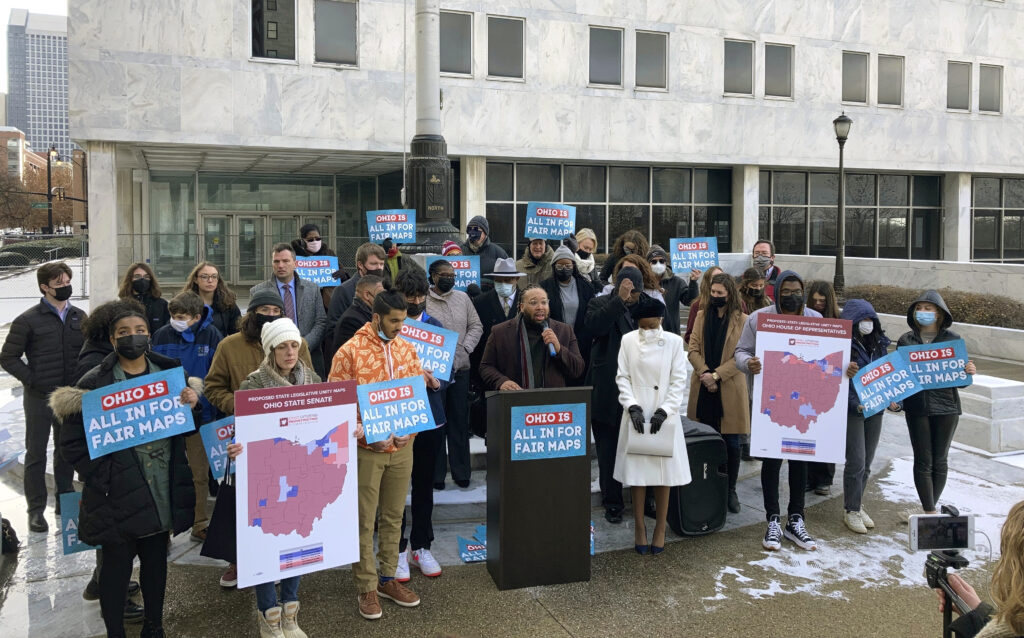U.S. Supreme Court Rejects Ohio Republicans’ Fringe Appeal Raising ISL Theory In the Wake of Moore v. Harper
WASHINGTON, D.C. — On Friday, June 30, the U.S. Supreme Court declined to take up a case from Ohio Republican legislators invoking the recently rejected radical independent state legislature (ISL) theory. In today’s order, the Court sent the case back to the Ohio Supreme Court for further proceedings in light of its ruling earlier this week rejecting the ISL theory in Moore v. Harper. Additionally, the Court vacated a previous decision from the Ohio Supreme Court that struck down the state’s congressional map for partisan gerrymandering, meaning that litigation over the map will resume in the state Supreme Court.
In their appeal to the U.S. Supreme Court, the Republicans legislators deployed the ISL theory as the basis for their request to reverse the Ohio Supreme Court’s decision that struck down the state’s congressional map for violating the state constitution. The ISL theory suggests that state legislatures have special authority to set federal election rules, free from interference from other parts of the state government such as state courts and governors.

Back July 2022, the Ohio Supreme Court issued a 4-3 decision ruling that the state’s revised congressional map drawn with 2020 census data — which was adopted by the Ohio Redistricting Commission after the state’s previously enacted congressional map was similarly blocked by the Ohio Supreme Court — was a partisan gerrymander that unduly favored Republicans in violation of the Ohio Constitution’s anti-gerrymandering provision.
In its decision, the Ohio Supreme Court ordered the General Assembly to enact a remedial congressional map for the 2024 election cycle, but it failed to do so within the time period allotted in the court’s order. As a result, the Ohio Redistricting Commission assumed the responsibility of redrawing the state’s congressional map, but it too failed to do so within the time period prescribed by the Ohio Constitution. As of now, Ohio still lacks a congressional map for 2024 that complies with the state constitution.
Meanwhile, on Oct. 14, 2022, four Ohio Republican lawmakers — all of whom were named as defendants in the two lawsuits challenging the state’s revised congressional map — filed a petition for a writ of certiorari asking the U.S. Supreme Court to adopt the ISL theory.
The Republican petitioners argued that under the ISL theory, only state legislatures can draw new congressional districts and any map adopted or ordered by a state’s judicial branch violates the Elections Clause of the U.S. Constitution. According to the GOP petitioners, the Elections Clause “vests” the power to regulate federal elections “in just one state-level entity: ‘the Legislature’ of ‘each State.’”
In line with this interpretation of the Elections Clause that is unmoored from history and legal precedent, the petitioners contended that “the Ohio Supreme Court violated the Elections Clause when it struck down the Ohio legislature’s congressional district map, dictated the map’s result, and imposed extra-constitutional requirements for drawing such maps.”
Given today’s order — which comes in the wake of the Court’s rebuff of the ISL theory in Moore — the Supreme Court effectively rejected the Republicans’ argument that “this case…presents an excellent companion to Moore that would allow the Court to more fully decide the extent to which a state court can usurp the legislature’s role in redistricting.”
As a result of today’s order, the Ohio Supreme Court can continue to play an indispensable role in reviewing the state’s congressional map to ensure that it complies with the Ohio Constitution.